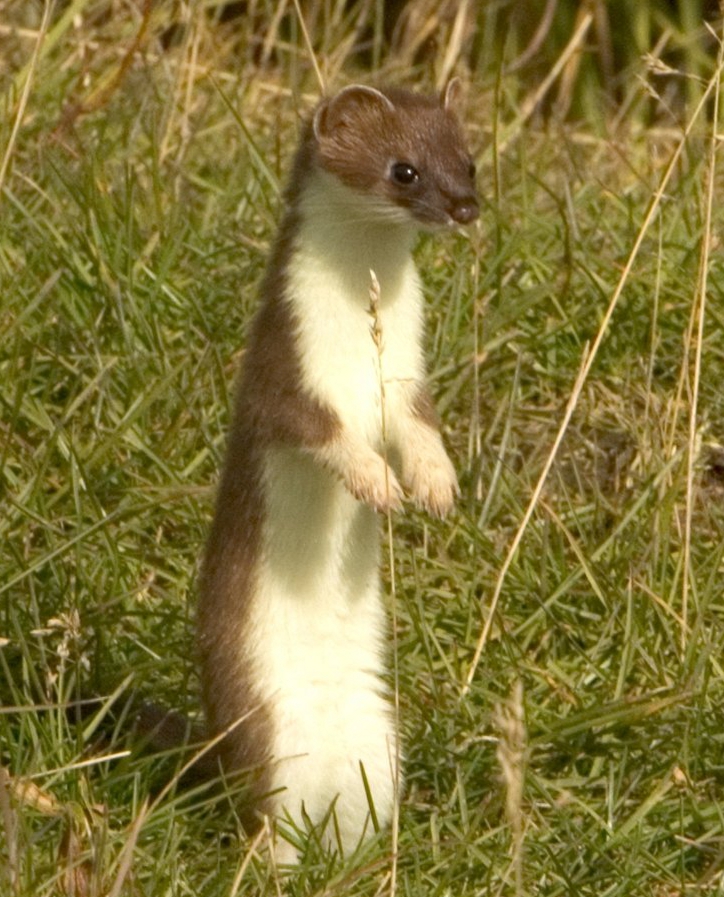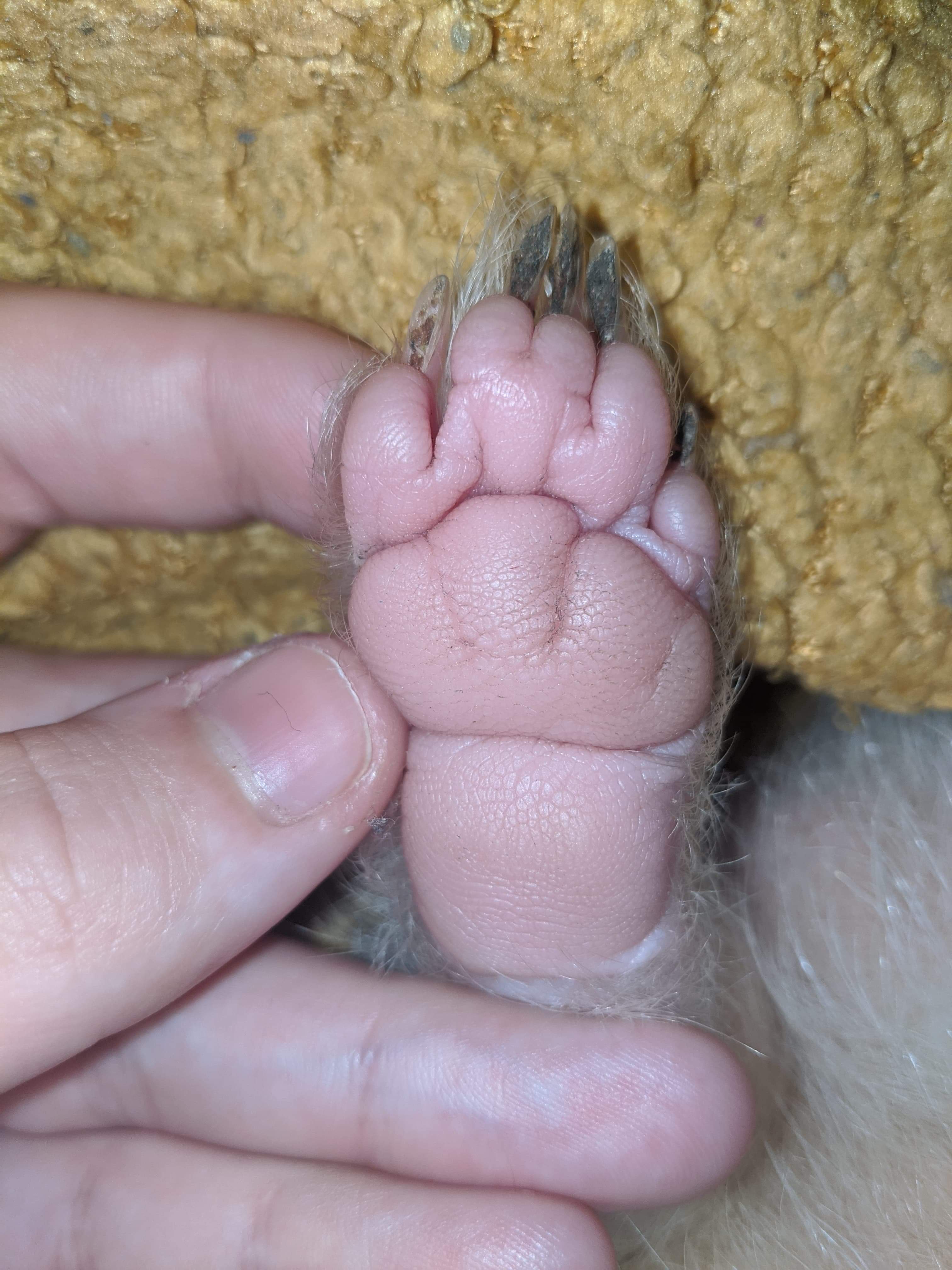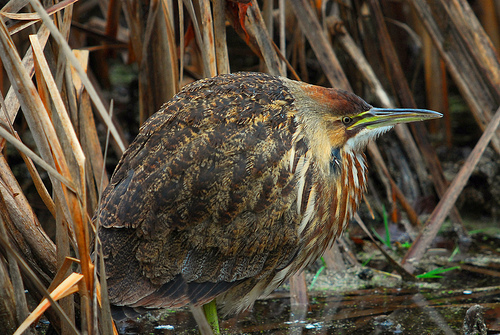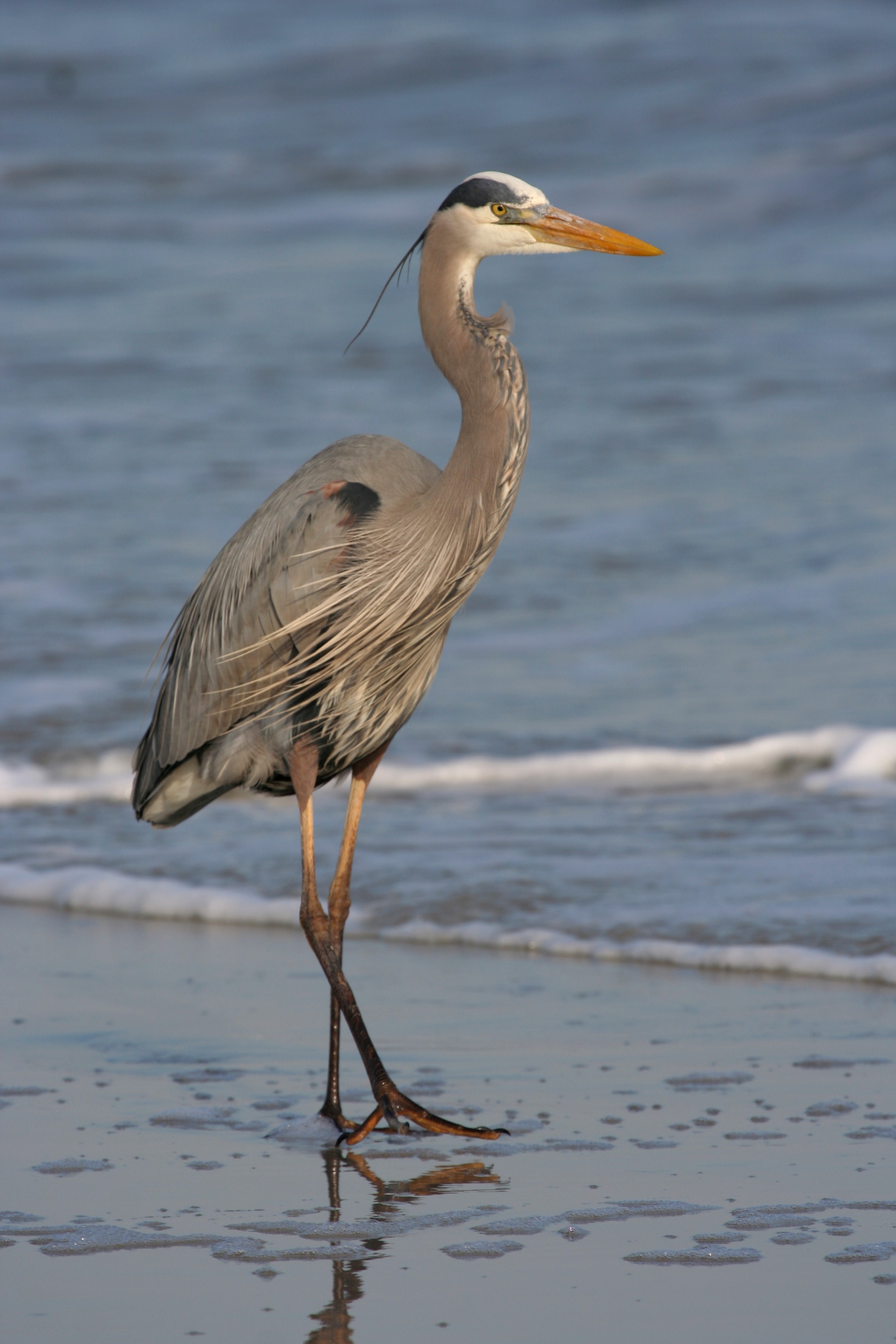|
M. Pennsylvanicus
The eastern meadow vole (''Microtus pennsylvanicus''), sometimes called the field mouse or meadow mouse, is a North American vole found in eastern Canada and the United States. Its range extends farther south along the Atlantic coast. The western meadow vole, Florida salt marsh vole, and beach vole were formerly considered regional variants or subspecies of ''M. pennsylvanicus'', but have all since been designated as distinct species. The eastern meadow vole is active year-round, usually at night. It also digs burrows, where it stores food for the winter and females give birth to their young. Although these animals tend to live close together, they are aggressive towards one another. This is particularly evident in males during the breeding season. They can cause damage to fruit trees, garden plants, and commercial grain crops. Taxonomy The species was formerly grouped with the western meadow vole (''M. drummondii'') and the Florida salt marsh vole (''M. dukecampbelli'') as ... [...More Info...] [...Related Items...] OR: [Wikipedia] [Google] [Baidu] |
George Ord
George Ord, Jr. (March 4, 1781 – January 24, 1866) was an American Zoology, zoologist who specialized in North American ornithology and mammalogy. Based in part on specimens collected by Lewis and Clark Expedition, Lewis and Clark in the North American interior, Ord's article "Zoology of North America''"'' (1815), which was published in the second American edition of William Guthrie (historian), William Guthrie's ''Geographical, Historical, and Commercial Grammar'' (Johnson and Warner), has been recognized as the "first systematic zoology of America by an American". Ord (1815) published the first scientific descriptions of Pronghorn, Pronghorn antelope (''Antilocapra americana''), Grizzly bear (''Ursus arctos horribilis'')'','' Meadow vole (''Microtus pennsylvanicus''), Bushy-tailed woodrat (''Neotoma cinerea''), Eastern gray squirrel (''Sciurus carolinensis pennsylvanicus''), Columbian ground squirrel (''Urocitellus columbianus''), black-tailed prairie dog (''Cynomys ludovician ... [...More Info...] [...Related Items...] OR: [Wikipedia] [Google] [Baidu] |
Microtus
''Microtus'' is a genus of voles found in North America, Europe and northern Asia. The genus name refers to the small ears of these animals. They are stout rodents with short ears, legs and tails. They eat green vegetation such as grasses and sedges in summer, and grains, seeds, root and bark at other times. The genus is also called "meadow voles". There is some disagreement on the definitive list of species in this genus, and which subgenera are recognized. The American Society of Mammalogists recognizes the following 60 species, with discrepancies as noted: Subgenus ''Blanfordimys'' * Afghan vole (''Microtus afghanus'') * Bucharian vole (''Microtus bucharensis'') * Juniper vole (''Microtus yuldaschi'') Subgenus ''Euarvicola'' * Short-tailed field vole (''Microtus agrestis'') * Mediterranean field vole (''Microtus lavernedii'') * Portuguese field vole (''Microtus rozianus'') Subgenus ''Hyrcanicola'' (not recognized by the ASM, listed in subgenus ''Microtus'') * Schelkovni ... [...More Info...] [...Related Items...] OR: [Wikipedia] [Google] [Baidu] |
Cougar
The cougar (''Puma concolor'') (, ''Help:Pronunciation respelling key, KOO-gər''), also called puma, mountain lion, catamount and panther is a large small cat native to the Americas. It inhabits North America, North, Central America, Central and South America, making it the most widely distributed wild, terrestrial mammal in the Western Hemisphere, and one of the most widespread in the world. Its range spans the Yukon, British Columbia and Alberta provinces of Canada, the Rocky Mountains and areas in the western United States. Further south, its range extends through Mexico to the Amazon Rainforest and the southern Andes Mountains in Patagonia. It is an adaptable Generalist and specialist species, generalist species, occurring in most American habitat types. It prefers habitats with dense underbrush and rocky areas for stalking but also lives in open areas. The cougar is largely solitary. Its activity pattern varies from diurnality and cathemerality to Crepuscular animal, ... [...More Info...] [...Related Items...] OR: [Wikipedia] [Google] [Baidu] |
Domestic Cat
The cat (''Felis catus''), also referred to as the domestic cat or house cat, is a small Domestication, domesticated carnivorous mammal. It is the only domesticated species of the family Felidae. Advances in archaeology and genetics have shown that the domestication of the cat occurred in the Near East around 7500 BC. It is commonly kept as a pet and working cat, but also ranges freely as a feral cat avoiding human contact. It is valued by humans for companionship and its ability to kill vermin. Its retractable claws are adapted to killing small prey species such as mice and rats. It has a strong, flexible body, quick reflexes, and sharp teeth, and its night vision and sense of smell are well developed. It is a social species, but a solitary hunter and a crepuscular predator. Cat intelligence is evident in their ability to adapt, learn through observation, and solve problems. Research has shown they possess strong memories, exhibit neuroplasticity, and display cognitive skil ... [...More Info...] [...Related Items...] OR: [Wikipedia] [Google] [Baidu] |
Domestic Dog
The dog (''Canis familiaris'' or ''Canis lupus familiaris'') is a domesticated descendant of the gray wolf. Also called the domestic dog, it was selectively bred from a population of wolves during the Late Pleistocene by hunter-gatherers. The dog was the first species to be domesticated by humans, over 14,000 years ago and before the development of agriculture. Due to their long association with humans, dogs have gained the ability to thrive on a starch-rich diet that would be inadequate for other canids. Dogs have been bred for desired behaviors, sensory capabilities, and physical attributes. Dog breeds vary widely in shape, size, and color. They have the same number of bones (with the exception of the tail), powerful jaws that house around 42 teeth, and well-developed senses of smell, hearing, and sight. Compared to humans, dogs possess a superior sense of smell and hearing, but inferior visual acuity. Dogs perform many roles for humans, such as hunting, herding, ... [...More Info...] [...Related Items...] OR: [Wikipedia] [Google] [Baidu] |
Marten
A marten is a weasel-like mammal in the genus ''Martes'' within the subfamily Guloninae, in the family Mustelidae. They have bushy tails and large paws with partially retractile claws. The fur varies from yellowish to dark brown, depending on the species; it is valued by animal trappers for the fur trade. Martens are slender, agile animals, which are adapted to living in the taiga, and inhabit coniferous and northern deciduous forests across the Northern Hemisphere. Classification Results of DNA research indicate that the genus ''Martes'' is paraphyletic, with some studies placing ''Martes americana'' outside the genus and allying it with '' Eira'' and '' Gulo'', to form a new New World clade. The genus first evolved up to seven million years ago during the Miocene epoch. Fossils Several fossil martens have been described, including: *†''Martes campestris'' (Pliocene) *†''Martes wenzensis'' (Pliocene) *†''Martes vetus'' (Pleistocene) Another descri ... [...More Info...] [...Related Items...] OR: [Wikipedia] [Google] [Baidu] |
Weasels
Weasels are mammals of the genus ''Mustela'' of the family Mustelidae. The genus ''Mustela'' includes the least weasels, polecats, stoats, ferrets, and European mink. Members of this genus are small, active predators, with long and slender bodies and short legs. The family Mustelidae, or mustelids (which also includes badgers, otters, and wolverines), is often referred to as the "weasel family". In the UK, the term "weasel" usually refers to the smallest species, the least weasel (''M. nivalis''), the smallest carnivoran species. Least weasels vary in length from , females being smaller than the males, and usually have red or brown upper coats and white bellies; some populations of some species moult to a wholly white coat in winter. They have long, slender bodies, which enable them to follow their prey into burrows. Their tails may be from long. Weasels feed on small mammals and have from time to time been considered vermin because some species took poultry from farms ... [...More Info...] [...Related Items...] OR: [Wikipedia] [Google] [Baidu] |
Striped Skunk
The striped skunk (''Mephitis mephitis'') is a skunk of the genus ''Mephitis (genus), Mephitis'' that occurs across much of North America, including southern Canada, the United States, and northern Mexico. It is currently listed as least concern by the IUCN on account of its wide range and ability to adapt to human-modified environments. Striped skunks are Animal sexual behavior#Polygamy, polygamous omnivores with few natural predators, save for birds of prey. Like all skunks, they possess highly developed musk-filled scent glands to ward off predators. They have a long history of association with humans, having been trapped and captively bred for their fur and kept as pets. The striped skunk is one of the most recognizable of North America's animals, and is a popular figure in cartoons and children's books. Taxonomy The striped skunk was first species description, formally named by Johann Christian Daniel von Schreber as ''Viverra mephitis''. The type locality is in eastern Cana ... [...More Info...] [...Related Items...] OR: [Wikipedia] [Google] [Baidu] |
American Short-tailed Shrew
The genus ''Blarina'', commonly called short-tailed shrews, is a genus of relatively large shrews with relatively short tails found in North America. Description They have 32 teeth and are in the red-toothed shrew subfamily. They generally have dark fur and thick feet. The saliva of these animals is toxic and is used to subdue prey. Species Species are: *Northern short-tailed shrew ''B. brevicauda'' *Southern short-tailed shrew ''B. carolinensis'' * Elliot's short-tailed shrew ''B. hylophaga'' * Everglades short-tailed shrew ''B. peninsulae'' * Sherman's short-tailed shrew ''B. shermani;'' possibly extinct Ecoepidemiology Short-tailed shrews are one of the animal reservoirs of the agents of Lyme disease and human babesiosis Babesiosis or piroplasmosis is a malaria-like parasitic disease caused by infection with a eukaryotic parasite in the order Piroplasmida, typically a ''Babesia'' or '' Theileria'', in the phylum Apicomplexa. Human babesiosis transmission via ... [...More Info...] [...Related Items...] OR: [Wikipedia] [Google] [Baidu] |
American Bittern
The American bittern (''Botaurus lentiginosus'') is a species of wading bird in the heron family. It has a Nearctic distribution, breeding in Canada and the northern and central parts of the United States, and wintering in the U.S. Gulf Coast states, all of Florida into the Everglades, the Caribbean islands and parts of Central America. It is a well-camouflaged, solitary brown bird that unobtrusively inhabits marshes and the coarse vegetation at the edge of lakes and ponds. In the breeding season it is chiefly noticeable by the loud, booming call of the male. The nest is built just above the water, usually among bulrushes and cattails, where the female incubates the clutch of olive-colored eggs for about four weeks. The young leave the nest after two weeks and are fully fledged at six or seven weeks. The American bittern feeds mostly on fish but also eats other small vertebrates as well as crustaceans and insects. It is fairly common over its wide range, but its numbers are t ... [...More Info...] [...Related Items...] OR: [Wikipedia] [Google] [Baidu] |
Great Blue Heron
The great blue heron (''Ardea herodias'') is a large wading bird in the heron family Ardeidae, common near the shores of open water and in wetlands over most of North and Central America, as well as far northwestern South America, the Caribbean and the Galápagos Islands. It is occasionally found in the Azores and is a rare vagrant to Europe. An all-white population found in south Florida and the Florida Keys is known as the great white heron. Debate exists about whether these white birds are a color morph of the great blue heron, a subspecies of it, or an entirely separate species. Taxonomy The great blue heron was one of the many species originally described by Carl Linnaeus in his 18th-century work, ''10th edition of Systema Naturae, Systema Naturae''. The scientific name comes from Latin , and Ancient Greek (), both meaning "heron". The great blue heron's niche in the Old World is filled by the congeneric grey heron (''Ardea cinerea''), which is somewhat smaller (), and s ... [...More Info...] [...Related Items...] OR: [Wikipedia] [Google] [Baidu] |








